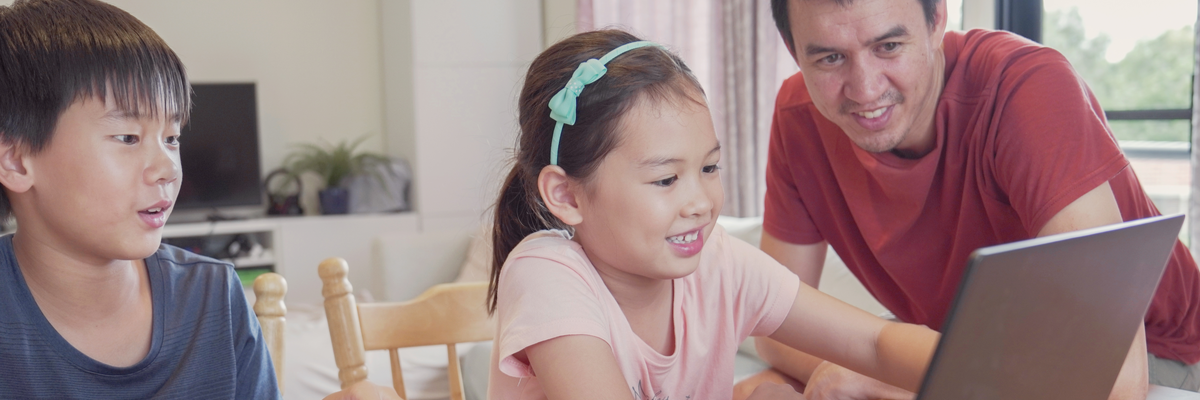
It may be hard to imagine that there is a silver lining after dealing with a global pandemic and the havoc it has wrought. It’s helpful to look for the positive as we rebuild and try to regain a sense of normalcy. This is particularly important as we make decisions about the next school year. Let’s hold on to some remote education practices from the past year that will better serve our students, staff, communities, and ourselves.
Encouraging family involvement
School staff and mental health practitioners have expressed over and over the increase in family involvement in providing supports to students during the pandemic. This increase was fueled by the many Google Meets and Zoom meetings held in our living rooms. So many teachable moments were shared in real time with kids, family, and school staff. We saw each other, not just our roles.
When school gets back to normal, let’s keep the connection through sharing videos from class and home. Here are a few tips:
- Highlight student work through Meets, Zooms, Chats.
- When scheduling meetings with parents and guardians, consider using these digital tools for those who may only have a lunch break to use for conferences.
- Meetings in person must continue, but now we have the flexibility to maintain important conversations through this connection.
Expanding remote learning opportunities using technology
For schools, collaboration in the virtual world through technology expands our environment from local to global. It also helps us provide more personalized opportunities based on student interests. Let’s expand these remote education opportunities as we return to the classroom.
Distance learning “field trips”
Is there a local business or organization where students could see the real world application of skills being taught in class? Instead of arranging the field trip for the entire class/school, why not create an opportunity for the most interested students? How many more experiences could you provide when you don’t have to take everyone?
With more personal experiences like these, student engagement increases and they develop community connections. Students also gain a better understanding of the role the organization plays in the community, and also have a chance to imagine how they might play a part in the future.
We can also give students the chance to visit places beyond our typical reach. Museums around the world have created virtual tours. Journeys to amazing nature preserves, national parks, and natural wonders are a keyboard click away, bringing to life the information studied in the classroom.
Curriculum support
Technology gives us access to almost any course work that you can imagine. There are YouTube videos, tutorials, TikTok or other platforms available to reinforce or review content taught in the classroom, using a modality that fits a student’s learning style.
Collaborative projects
In the classroom, you can use technology to provide opportunities to collaborate with others. You can design project based learning activities with other schools or communities, assign study buddies through shared documents, invite international presenters, and pen pals.
Consider how intergenerational projects could include interviews with the individuals who have experienced the history that we teach and study.
Supporting mental health to close the learning gap
Think about the attention we have had to place on mental wellness this past year: ours, our students’, families’, and that of our staff members. We have all made concessions to address the various ways that this last year and a half has changed our lives.
We also know that addressing the learning gap when we return to the classroom must begin by acknowledging any gaps in mental wellness. Here are some practices that we must continue and expand.
Lessening the stigma of seeking help. Every media outlet speaks about the increasing concerns about learning loss during the pandemic. The discussion of Social and Emotional Learning is common but it must stretch further to include mental health and wellness. The more we talk about it, the more we break down the stigma and barriers to solving the problem.
Addressing SEL explicitly in the classroom. Our educational practices must include instructing our students about how to regulate emotions, identify and articulate motivating feelings, and use empathy while building relationships.
Providing mental health support for staff. In the same vein, teachers must have similar considerations when supporting the return to regular schedules.
Allowing students and staff to express themselves in safe spaces will increase productivity, improve attendance, decrease the need for discipline, and boost academic progress. Learning recovery and transition will be enhanced when we consider the mental wellness of ourselves and our students.
Although we can’t wait for the pandemic to be behind us, let’s take a moment to consider those practices that we should bring forward and continue to support our mental health and each other.





